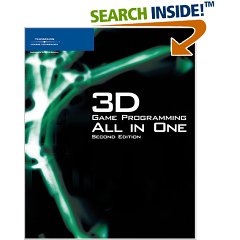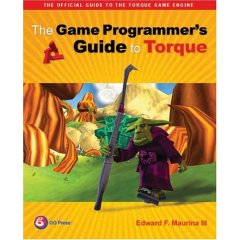Applications in Virtual
Reality
4003 590-09 /
4005-769-09
Fall 2007
Instructor: Joe Geigel
Office: 70-3527
Office Hours: MW 2-4
E-mail: jmg@cs.rit.edu
URL: http://www.cs.rit.edu/~jmg/
Course URL:
http://www.cs.rit.edu/~jmg/vr
Class Dates: MW 10-noon
Classroom: 70-ICL6
PREREQUISITE: 4003-570/4005-761 Introduction to Computer
Graphics/Graphics I OR
4002-502 Foundations of 3D Graphics Programming OR
4002-735 3D Graphics Programming OR
Permission of Instructor
Description
The goal of this course is to
introduce students to virtual reality hardware, software, and toolkits
and provide an opportunity for them to apply this knowledge to a given
problem domain. During the course, students will adapt and employ a
distributed Virtual Reality (VR) system as an approach to a large-scale
task in data exploration, interaction design, and immersive experience
within the context of this domain.
The course uses a teambased structure where students are divided into a
set of technical teams; each team tasked to build a smaller component,
contributing to the larger task. At the end of the course, the
components will be combined together to form a full system. The course
is designed to not only provide students with knowledge and experience
in using a distributed VR system, but also will expose students to the
experience of working within and between technical teams in building a
large software system. It is expected that each offering of the course
may focus in a different problem domain.
This year, the focus of the course will be in the domain of theatre.
The overall goal of the course will be to adapt a gaming engine
for theatrical purposes.
Students should have a strong programming background and a proficiency
in a 3D API (OpenGL, DirectX, or Java3D). Students with
expertise in distributed systems or networking and an interest in
Graphics or virtual reality are also encouraged to register.
Aesthetic elements will be designed and created by students from the
School of Design and
Visualization (CIAS) .
Textbooks
There are two
textbooks for the class, one required and one optional.
Learning Outcomes
- Describe the components
of a distributed VR system and the latest advances in designing such
components
- Apply knowledge in
advanced graphics and distributed systems to the construction of a
distributed VR system.
- Apply existing
graphics/VR toolkits, APIs, and software packages in the construction
of a large scale graphics project.
- Specify, design,
implement, and document an integral component of a larger software
project related to computer graphics and VR.
- Successfully
participate in a team based project with responsibilities assigned
within and between individual teams.
Requirements and
Assessment
The primary learning
component and means for assessment will be the software component that
each team will design, build, and implement. Each
component will be defined with respect to the larger system and, as
such, collaboration with other teams
will be essential.
It is important that each team makes steady progress as the quarter
advances. With the goal of keeping the teams on track, each team
will be required to give a short demo periodically during the quarter
("checkpoints") illustrating the progress made The
part of the component that will be demoed at each checkpoint will be
determined and defined, with a proposed
timeline, by each team during the first weeks of the course. (Dates of
checkpoint
presentations are indicated in the SCHEDULE).
Intermediate deliverables will be required for each checkpoint.,
Each team is expected to build a Web page which will include
documentation on the component as well as a running diary of progress
made. A list of teams, with links to each team's Web page
will be listed in the TEAMS section of this
Web site. Graduate students are expected to act as team leaders,
and will ultimately be responsible for final deliverables (including
documentation) of the teams.
The final team deliverable will include the software produced as well
as detailed documentation on the software component.
The documentation is as important as the component, since it is
hoped that other students will build upon these components in future
offerings of the course. More information of the format of this
documentation will be given as the course progresses.
The components will be individually graded and all team members
contributing to a component will be given the same base grade.
In order to
assess students
ability to work within and between teams, evaluations of teammates as
well as peer review of teams will be required of students.
There will be a take home final exam which will serve as an after the
fact evaluation of the teams, the production, and the course. The
class as a whole will provide a demonstartion of the intgrated system
during finals week.
The final grade will be
determined using the following weights:
|
Graduate |
Undergraduate |
Meeting Checkpoints
(Team Grade)
|
25% |
35% |
Final Demonstration
(Team Grade)
|
35% |
40% |
| Peer
Evaluations (Invidual Grade) |
20% |
25% |
Leadership
/ Documentation (Grad only)
|
20%
|
|
Related Undergraduate
Courses
4003 570
Computer
Graphics I
4003 571 Computer Graphics II
4003 572 Computer Animation: Algorithms and Techniques
Computer Science
Department Policy on Academic Dishonesty
Students are expected to
maintain the highest standards of ethical behavior.
Those who behave in
a
dishonest or unethical manner in computer science courses, or in their
dealings
with the Computer Science Department, are subject to disciplinary
action.
In particular, dishonest or unethical behavior in the execution of
assigned
work in a computer science course will be treated as follows:
For a first offense the
student involved will receive a grade of zero on the assignment. [A stronger penalty may be exacted
if, in the judgement of the instructor, the offense involves a flagrant
violation of basic ethical standards.]
For a second offense, in the same or a different course, the student
will receive a failing grade for that course.
A third offense will be referred to judicial affairs. Furthermore, the following action
will be taken for each person involved in the incident, whether
currently enrolled in the course or not:
If the student is a
computer science major, a letter recording the incident will be placed
in the student's departmental file; otherwise, the letter will be
forwarded to the student's department chair or program coordinator.
last updated
08/30/07

